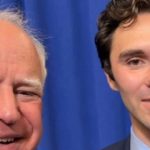Photo by Chip Somodevilla/Getty Images
- SEC chair Gary Gensler outlined his concerns around the GameStop episode in prepared remarks to Congress Thursday.
- He highlighted seven factors he believed were at play amid the mania that roiled the market in January.
- Among the factors Gensler pointed to were the gamification of trading, payment for order flow, and short selling.
- Sign up here for our daily newsletter, 10 Things Before the Opening Bell.
In prepared remarks to the House Committee on Financial Services, US Securities and Exchange Commission Chairman Gary Gensler outlined his concerns around the GameStop frenzy, and pointed to a number of specific factors that laid the groundwork for the episode earlier this year.
In January, day traders drove up the share price of the GameStop, initiating a “short-squeeze” on hedge funds that had been betting against the video game retailer. From around $20 in early January, the stock shot up to $480 at its peak before falling back down $40, all in a matter of weeks.
And it wasn’t just GameStop. Gensler points to the handful of other “meme stocks” that also shot up, showing involved that exhibited significant price volatility, trading volume, and attention in the markets.
Given the increasing number of entities at the “intersection of finance and technology,” the newly appointed chair proposed a reassessment of existing policies.
“When new technologies come along and change the face of finance, how do we continue to achieve our core public policy goals and ensure that markets work for everyday investors?” he said.
Gensler, a former Goldman Sachs banker, then highlighted seven factors that he believed were at play amid the mania:
1. Gamification and user experience
Many of the traders were using the popular commission-free trading app Robinhood, which has received backlash from lawmakers, regulators, and Wall Street firms for its role at the center of the saga. This includes complaints that the mobile app used aggressive tactics to lure young and inexperienced investors with commission-free trades.
CEO Vlad Tenev defended the mission of his trading platform, which seeks to democratize finance for all.
“Investing should be as ubiquitous as shopping online,” Tenev told Bloomberg. “It should just be something that people do.”
Gensler however called this strategy “gamification,” which he said encourages users to engage more, and therefore trade more.
“Following the wrong prompt on a trading app, however, could have a substantial effect on a saver’s financial position,” he said in his testimony. “A big loss could have immediate implications for the app user’s ability to afford their rent or pay other important bills. A small loss now could compound into a significant loss at retirement”
2. Payment for order flow
Payment for order flow generated $331 million in revenue for Robinhood in the first quarter of 2021, according to a securities filing. That’s more than triple the $91 million Robinhood reeled in from the business during the same period last year.
Gensler discussed how the payment for order flow from wholesalers to brokers allows the former to get valuable information that other market participants receive with a delay, if they receive it at all. Higher volumes of trades, he said, generate more payment for order flow.
“This brings to mind a number of questions: Do broker-dealers have inherent conflicts of interest? If so, are customers getting best execution in the context of that conflict? Are broker-dealers incentivized to encourage customers to trade more frequently than is in those customers’ best interest?”
Gensler noted that countries like the UK and Canada do not allow payment for order flow.
3. Market structure
The chair detailed the US stock market’s structure, which has three segments: public markets that make up 53% of trading volume, alternative trading systems at 9%, and off-exchange wholesalers at 38%. Of the wholesalers, just seven firms dominate this group.
“One firm, Citadel Securities, has publicly stated that it executes about 47% of all retail volume,” Gensler said. “In January, two firms executed more volume than all but one exchange, Nasdaq.”
The high concentration of retail orders he said poses a threat to “healthy competition.”
“History and economics tell us that when markets are concentrated, those firms with the greatest market share tend to have the ability to profit from that concentration,” he said.
4. Short selling and transparency
While Redditors on Wall Street Bets were pushing up the stock, on the other side of the trade were the short-sellers.
Gensler, a former professor at MIT Sloan School of Management, said he will call for greater transparency around short-selling moving forward, and also touched on total return swaps, the instruments that were a Caius of the Archegos Capital Management blow up in March.
While the Financial Industry Regulatory Authority and exchanges publish short sale data, they do so on an aggregated monthly basis, under the Dodd-Frank Act, he said.
“I’ve asked staff to consider recommendations for the Commission about whether to include total return swaps and other security-based swaps under new disclosure requirements and if so how,” he said.
5. Social media
Gensler discussed the power of Reddit, the primary forum for the retail traders who coordinated their effort to oppose short-focused hedge funds like Melvin Capital.
“To be clear, I’m not concerned about regular investors exercising their free speech online,” he said. “I am more concerned about bad actors potentially taking advantage of influential platforms.”
He raised the issue of wrongdoers that may attempt to use these forums to hype certain stocks or manipulate markets. Beyond retail investors, he said machine learning, data analytics, and natural language processing have allowed sophisticated investors to monitor behavior as well, calling this practice “sentiment analysis.”
“With that comes the risk that nefarious actors may try to send signals to manipulate the market. This is an area for which we will continue to deepen our understanding, resources, and capabilities,” he said.
6. Market “plumbing”, clearance, and settlement
Gensler discussed how brokerages, including Robinhood, restricted customer access to trading in certain meme stocks. At the root of this issue, is the settlement cycle of trade day plus two days (T+2), he explained, in which clearinghouses must cover the credit, market, and liquidity risk in two days.
He proposed a shortening of the settlement cycle, which he said could reduce costs and risks.
“The longer it takes for a trade to settle, the more risk our markets assume,” he said. “We now have the technology to further shorten the settlement cycles, not only to the settlement cycle we had a century ago but even to same-day settlement (T-0 or T-evening).”
7. System-wide risks
Gensler listed three systemic issues resulting from the saga that were on his radar.
First, he noted the failure of some firms to meet collateral requirements set by clearing houses, pushing them to shut down customer access to trading. He did not mention Robinhood, but he mentioned a firm having to fundraise within hours to meet its $1 billion obligation, which the company had to do.
Second, Gensler pointed to the billions of dollars lost by several hedge funds. He did not name specific funds, though Melvin Capital was the most prominent firm to get burned by the short squeeze, with the fund down 50% in January.
His third concern was the issue of concentration between market makers and brokers at the clearinghouse. This he said poses a risk “should any single incumbent with significant size or market share fail.”
Powered by WPeMatico






